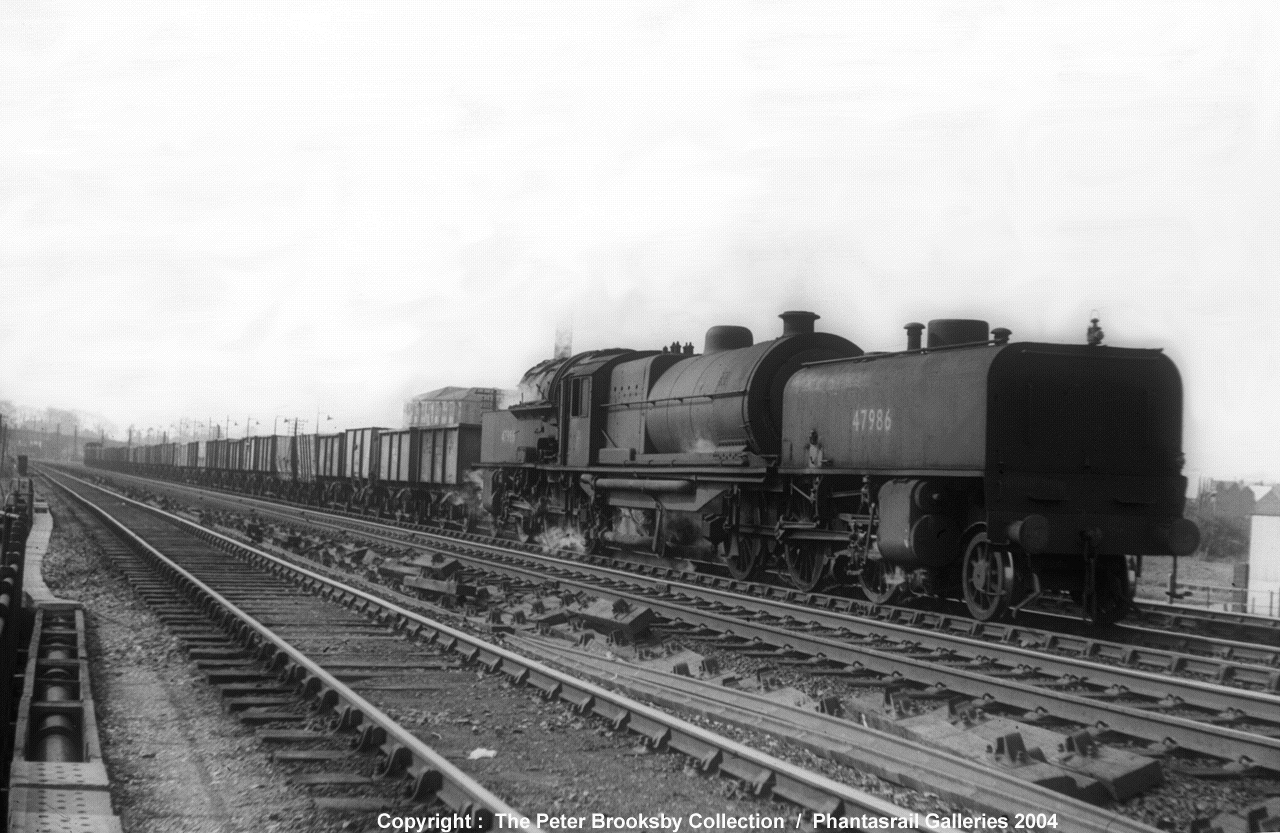The powerful Garratt style locomotive, basically two engines in one (not too disimlar to the Farilie arrangement) has been a valuable addition to many locomotive fleets of several countries. Many African nations (for example Rhodesia and South Africa) depended on the use of these designs well into the 1980s and '90s. Their ability to work well on tightly curving tracks and being able to haul very heavy trains over long distances and changing gradients has allowed the type to spread all over the globe, from Tanzania to Tasmania. Beyer Peacock (the company that never built an ugly locomotive) was the first to build a Garratt locomotive: the K1 for the North-East Dundas Tramway in Tasmania. This locomotive happily survives today in full working order on the Welsh Higland Railways.
Surprisngly, britain itself had used only two main-line standard gauge garratts: the LMS' 33 Beyer-Garratts, and the LNER's U1, designed by Sir Nigel Gresley and the most powerful steam locomotive ever to run in Britain.

Top: the LMS Beyer Garratt in service and right: the LNER's powerful U1 in its official works portrait.
Both of these designs were plagued by two facts: one, that they were difficult to fire due to the lack of automatic coal pushers, and also, Britain's railways really were unsuitable grounds for them. Garratts are best deployed in difficult terrain or with exceptionally heavy loads, which makes them economically viable. There were certainly heavy loads, but the problame is they didn't materialse often enough- and to make matters worse, sidings and crossing loops for the extended trains were far too small. This is similar to what had occured with Nigel Gresley's excellent P1 design: it worked superbly, but the huge loads it was supposed to pull were rare.
The U1 was actually designed to bank coal trains over the steep Worsborough Bank on the famous Woodhead Route in its pre-electric days (reasons for it being known as the 'Wath Banker'). In its life it was converted to an oil burner with limited sucess, and was tried out on the Lickey Incline as a replacement for the legendary 'Big Bertha', however it was mostly unsuccessful. It was withdrawn and scrapped in 1955. Crews disliked the locomotive because of the massive amount of coal shoveling involved to keep it running, coupled with hellish breathing conditions created by the smoke it relased when banking in the Silkstone Tunnels. The garratt's crews were notorious for failing it for the slightest reason if it meant they wouldn't have to use the locomotive that day. Among other problems, it also suffered from excessive boiler corrosion due to the very soft water it was fueled with.
As for the 33 beyer-Garratts on the LMS, they suffered from a critical defect: they were designed according to the Midland's 'Small engines' policy- and had only standard axle boxes which suffered from critical overheating. Their coal consumption was terrible and like the LNER's U1 they were maintenance nightmares.
One good point about the LMS design was its revolving coal bunker on the later engines which made the fireman's lot much easier. However, there was still no automatic coal pusher.
So, the verdict for the two sole garratt designs to operationally serve in Britain? Both were flawed, and were in some ways uneccesary- the design was meant for curved and diffcult terrain with plenty of siding room for accomodating long trains- not what they operated on. Also, despite their power, the type should have been selected for use only with the heaviest and longest trains to make them economically viable. As it was, these trains were realitely few in those days (a problem shown, as mentioned, with the otherwise excellent P1 mikado of the LNER). However, for banking purposes, the design was also flawed. Such needs could have been met by a more conventional locomotive: for example in the style of the classic 0-10-0 'Big Bertha' wich was perfect for use on the sharp Lickey Incline.
Certainly, though, both designs did at least give the two operating companies some serious pulling might. the U1, as mentioned, gave its designer yet another record to add to his book: the most powerful British steam engine ever. The LMS design might well have been better had it not been for the restrictive loading gauge and the faulty axle boxes.
Despite the Garratt design's failure to become entrenched in British Steam annals, it acheived great success on another continent where there was the space, heavy train loads and terrain that meant the type could achieve success. In the next part, I will talk about, of course, the Australian Garratts and their excellent, far more lasting service.
Saturday, March 1, 2008
The Mighty Garratts Part One: British Edition
Posted by Klink at Saturday, March 01, 2008 4 comments
Subscribe to:
Comments (Atom)



